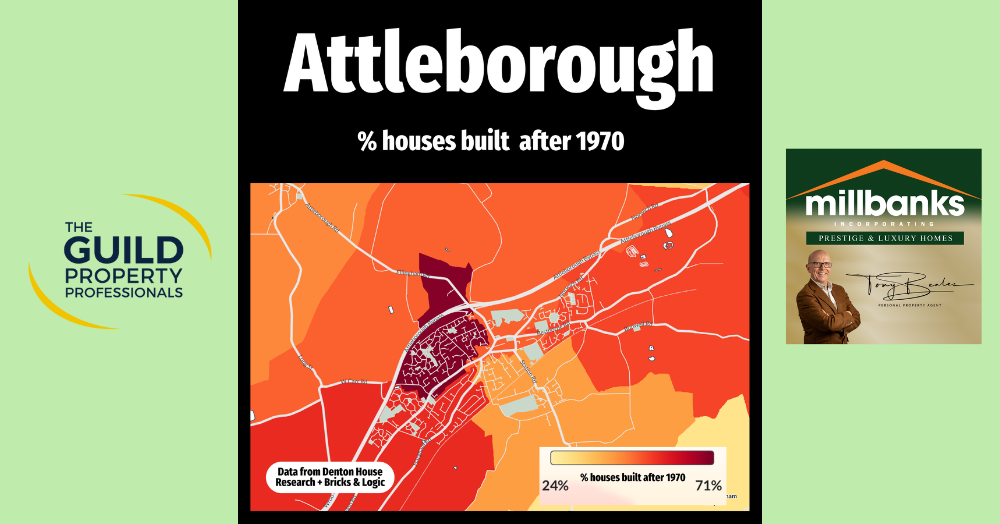

Get in touch with us
Over the past three years, the number of homes for sale has surged dramatically, far outpacing the national rise. Yet, despite the increase, supply remains tighter than in past downturns. With more choice for buyers, success now depends on smart, realistic pricing that stands out in a competitive market.
Many would-be buyers hesitate, waiting for calmer times before taking the plunge. Yet history shows that waiting often costs more than acting. While renters lose money monthly, owners build equity and stability. The market rewards time, not timing—progress starts the moment you buy.
This week’s property update looks at the latest £-per-square-foot trends, offering a snapshot of how the market is moving. While small shifts may not signal price changes, they reveal the evolving mix of homes for sale and provide valuable insight into overall market health and momentum.
In Attleborough, the blend of property types mirrors the town’s character—from flats to semi detached homes and spacious detached homes. This mix, shaped by local history and planning, reveals not just housing trends but the lifestyle choices of the people who call Attleborough home.